This photo begs for comedy…, “Ahh, guys, we’ve gone 40 miles in the wrong direction” Please feel free to add your own caption.
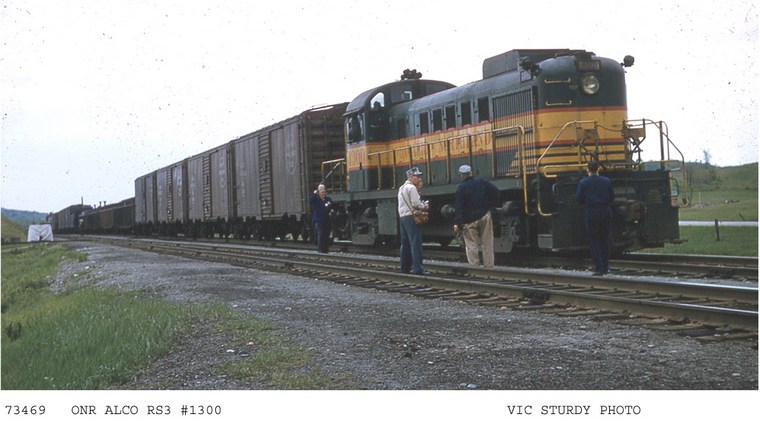
1300 in 1950’s scene unknown location.
My old town of Cobalt! Spent 3 years there 71-74 , little did I know I would return for a year in 2008

ONR 113 (North Bay to Englehart freight) is running late allowing for this photo as it passes the old Right-of-Way silver mine during mid morning in Cobalt, ON. ONR GP38-2’s # 1800, 1805 & 1808 along with SD40-2 1733. July 26, 1989
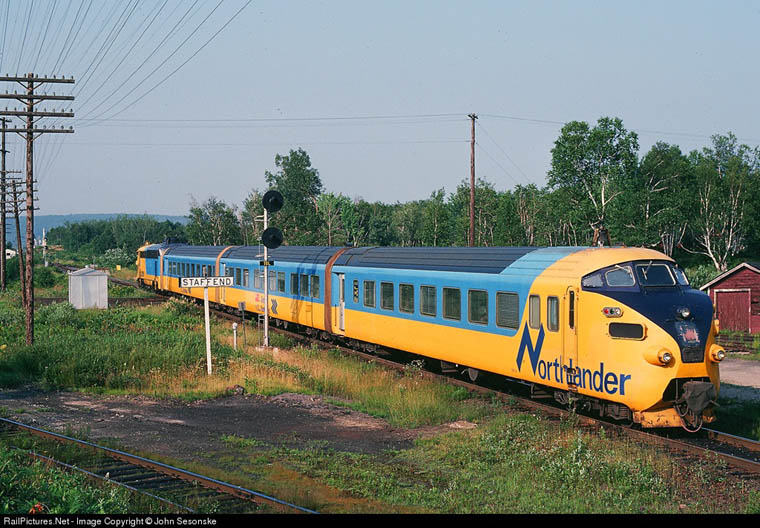
The Northlander begins its northbound journey on ONR rails after coming off the CN Newmarket Sub at this junction. FP7Am powered European TEE trainset. Note the location sign for Staffend which is mile 0.6 in the ONR Employee Timetable. ONR yard and shops are just behind and to the right of where the photographer is standing.
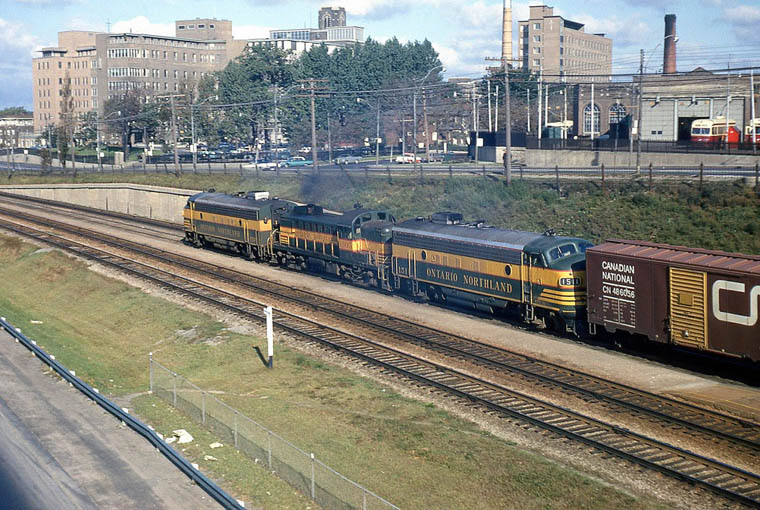
1507-1305-1511
1507-1305-1511 with fr
“It’s only a SMALL dent, think they’ll notice!?”
"A flat? Whaddya mean a flat?
Love that Cobalt picture… the photographer is on a bridge. I crossed that bridge everyday walking my dog. At the end of the bridge on the left side of this photo is blacksmith Fred Larose’s cabin, exactly the way it was the day he scared away a fox by throwing his hammer, which hit the outcrop revealing pure silver, setting off a claims rush into the richest silver mining camp ever in the history of the world.
The Right of Way Mine in the photo is still there, or at least its Headframe. Cages, skips and underground loci’s with their ore cars are strewn about on surface in a somewhat organized fashion.
A statue of Fred Larose and the fox are nearby in town.
Oh we’ll sing a little song of Cobalt
If you don’t live there it’s your fault
Where all the silver comes from
And you live a life and then some.
Cobalt you’re the best damn town I know
… The Cobalt Song, best done with 20 or so Mining students after 3 beers in a bar, preferably The Miners Home Tavern in Cobalt.
“When Jesse lets one rip the cab clears out real fast”
Few railroads are as poorly understood or known about than the Ontario Northland, formerly called the Temiskaming and Northern Ontario, especially with our American cousins. It went as far West as Hearst and Kapuskasing, South to North Bay, North to James Bay on Hudsons Bay at Moosonee, East to Rouyn-Noranda. This is an enourmous area the size of Texas. It served the important mining areas of Kirkland Lake, Timmins ( home of Shania Twain), Cobalt, Noranda, Temagami and many other small operations. Major pulp and paper and logging operations throughout the system and a large Agricultural area in New Liskeard up to Engelhard. These agricultural areas were the reason the railroad was built in the first place to bring farmers production to market. When silver was discovered in Cobalt it set off a prospecting rush throughout the North that uncovered vast rich resources of Gold, Nickel, Copper, Iron Ore all of which are still producing today.
That T&NO gas electric is one classy looking passenger train.
The name was changed to Ontario Northland after WWII because the reporting marks T&NO frequently wound up with cars being routed from, and to, the Texas and New Orleans thousands of miles away, which probably was not too amusing during the war.
Yes, Mining Man, some railroad names could cause confusion. There was a Mississippi Central in Mississiippi, which could have been confused with the Michigan Central, but it had the reporting mark MSC
It is well that the Georgia Northern did not take the names of its two end towns–Boston and Albany.
Red number boards. I think this was pretty rare anywhere. Early paint scheme … looks pretty good to me.
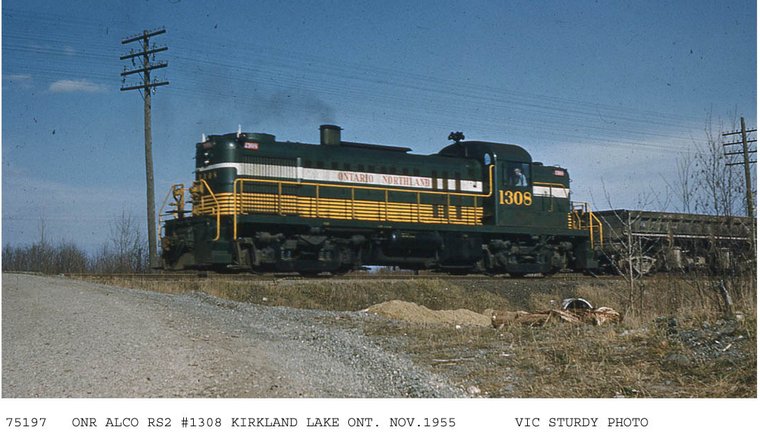
1308 (1304-1311 one order 8 units) RS-3 MLW 76116 11/1951
A caption for that RS-3 photo?
“Waddaya mean you locked the keys in the cab?”
Or…
“I have the jumper cables? I thought you had the jumper cables!”
Keep those joke captions rolling in …thanks Firelock
I doubt if the white band on the RS2 would hold up very well. Also wonder if the red number board was put in to match the red lettering on the white band, or if there was more to it than that?
Anyone know if red numbers boards were tried elsewhere?
Found some new pictures with those ‘red numberboards’ on the Ontario Northland RS2’s. Do you think there was some advantage to this in terms of visibility or was this just cosmetic?
RS2 scenes are in Swastika, Ontario, named long before the name had other connections and a former Quiz Question!
Last picture is a sole FP7 in the Classic ONR scheme.
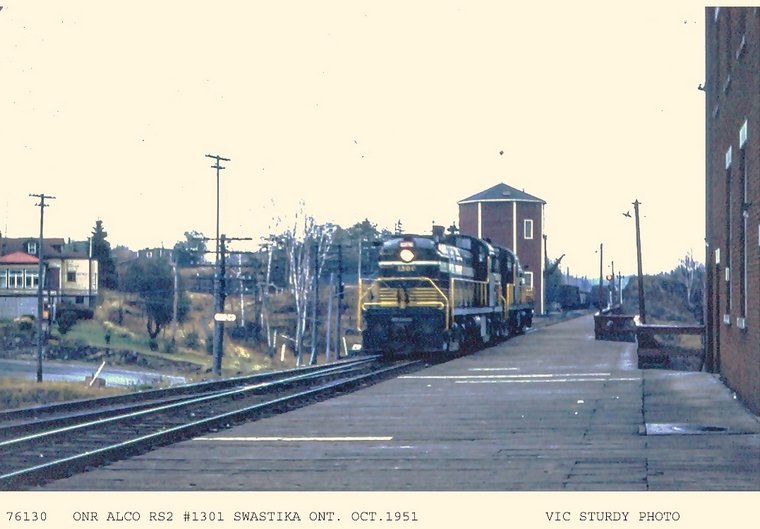
1301 and another RS-3 passing the station. Note red signal right background. Mile board 26 at left.
Digital restoration three photos Walter Pfefferle.
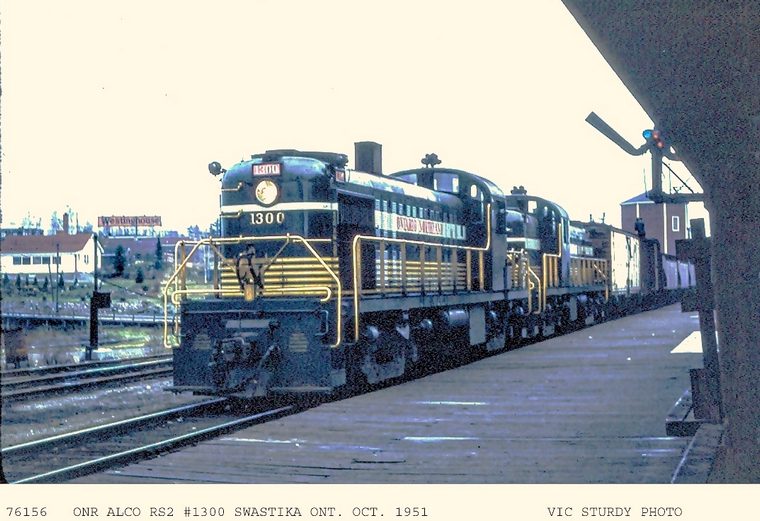
1300 and likely 1301 passing station. Note order board is “on” for this train.
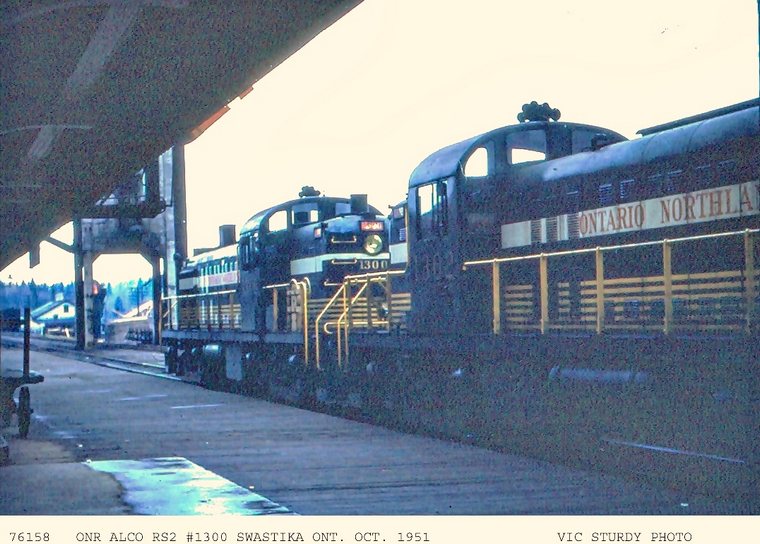
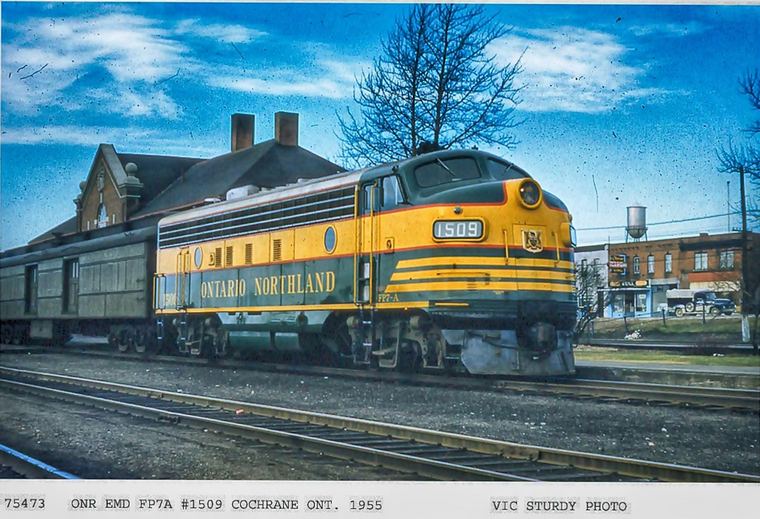
1509 with local passenger train. Note truck on street in background. Digital restoration Walter Pfefferle








